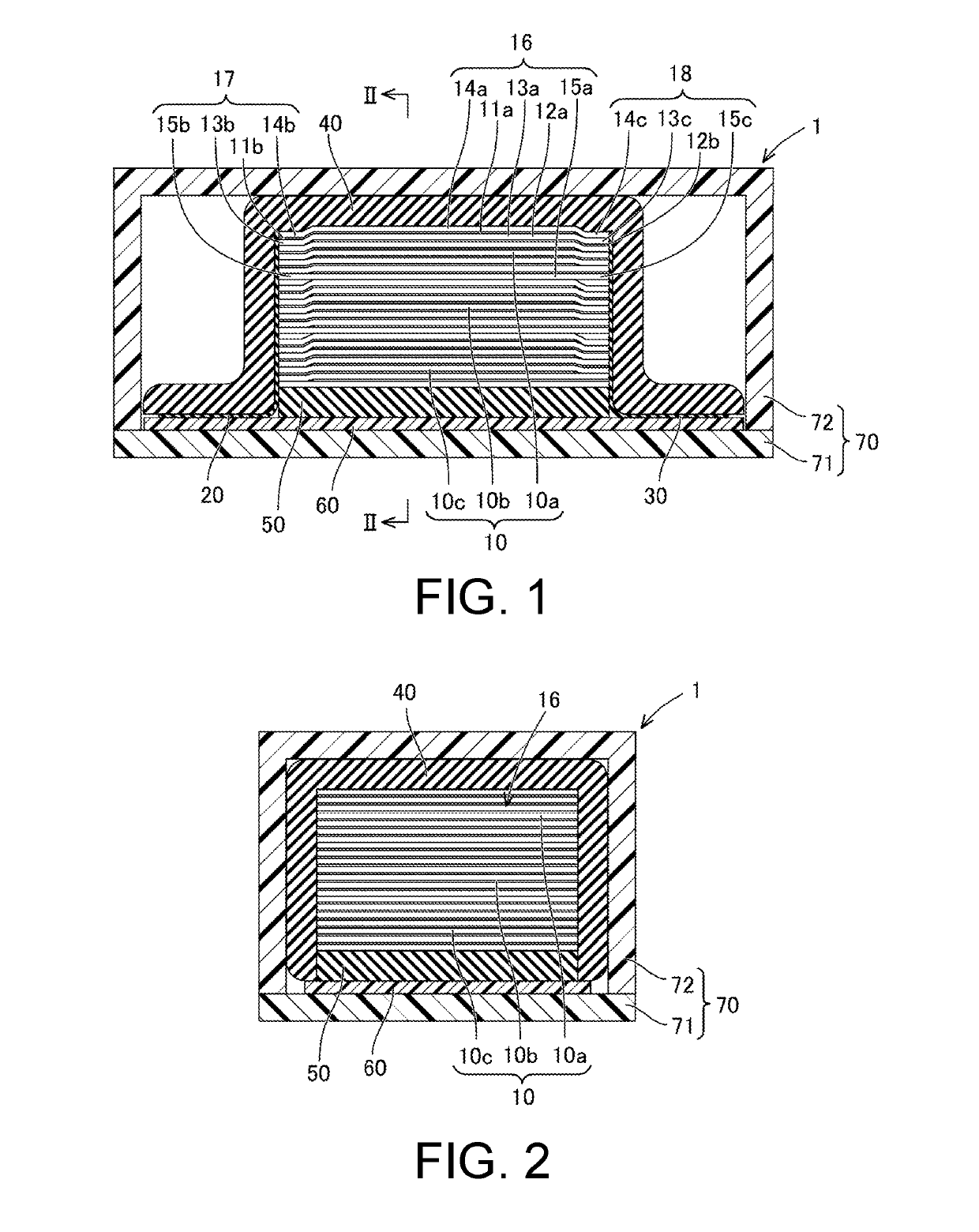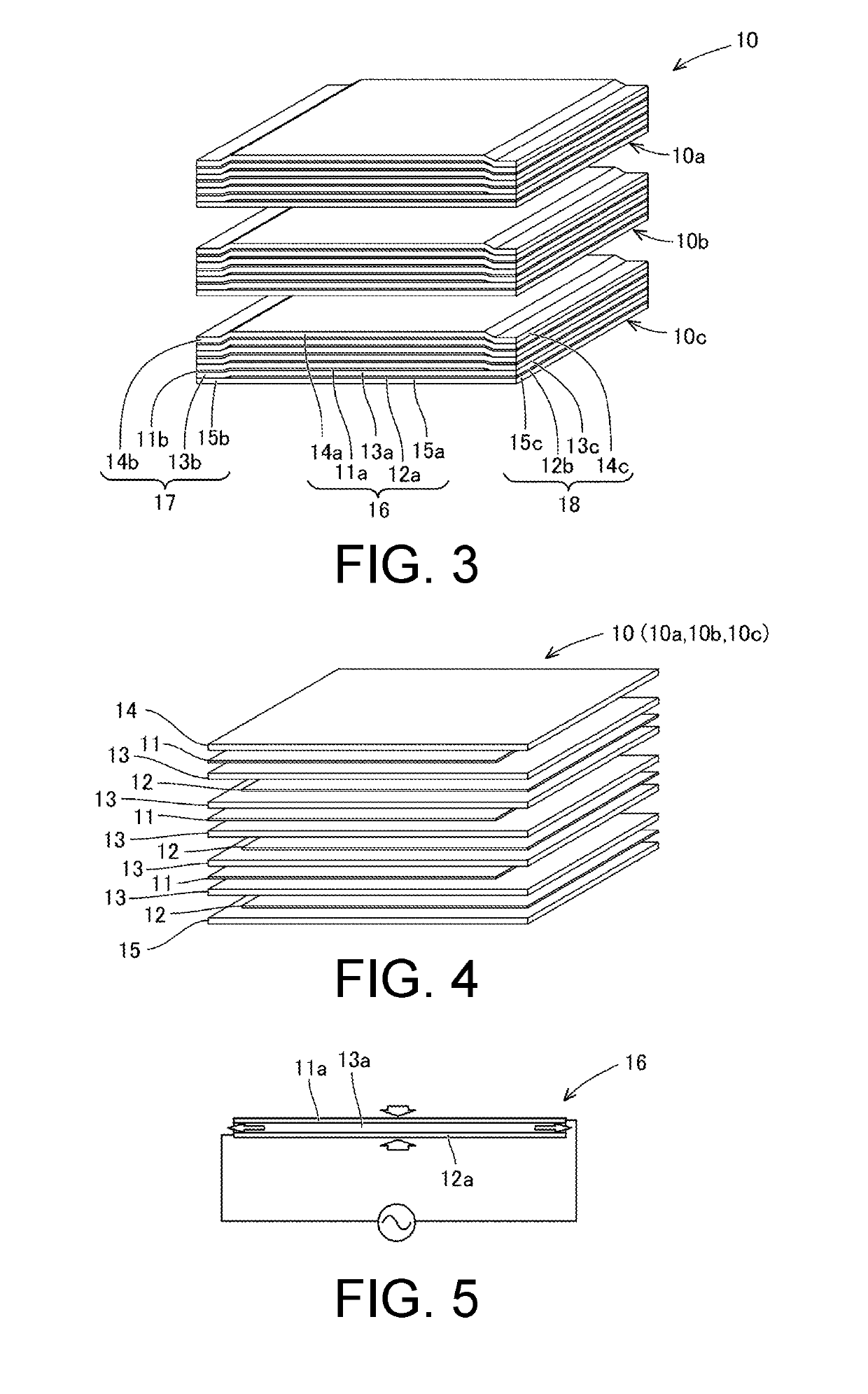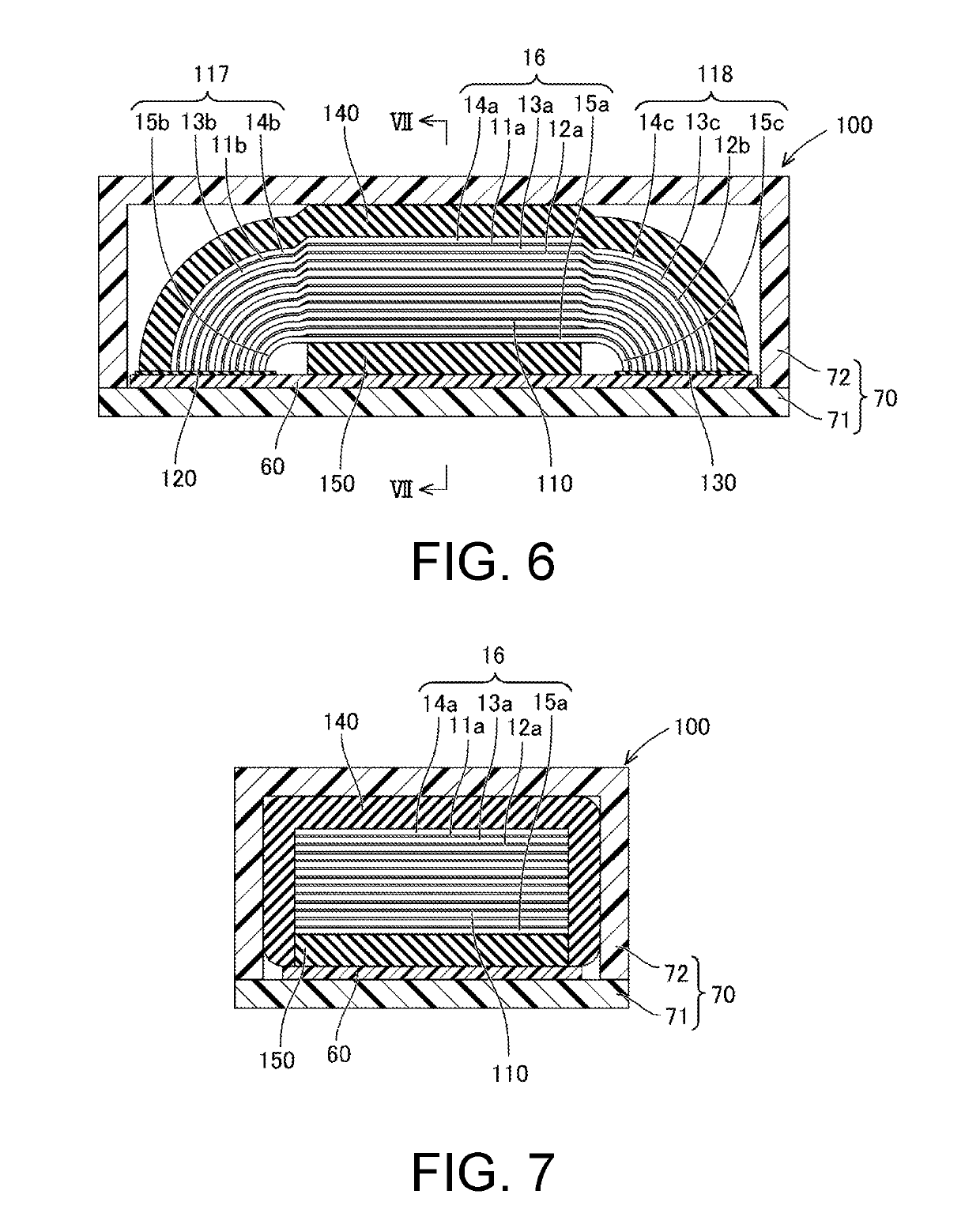Electrostatic transducer
a transducer and electrostatic technology, applied in the field of electrostatic transducers, can solve the problems of increasing the size of the whole actuator, the difficulty of making the electrode covered body having the electrode layer thinner, and the difficulty of adjusting the terminal to extract electricity from each electrode layer, etc., to achieve the effect of reducing the generation of large deformation force, high durability, and improving the durability of the first terminal electrode part and the second terminal electrode par
- Summary
- Abstract
- Description
- Claims
- Application Information
AI Technical Summary
Benefits of technology
Problems solved by technology
Method used
Image
Examples
first embodiment
1. First Embodiment
(1-1. Outline of the Electrostatic Transducer 1)
[0022]An electrostatic transducer 1 utilizes a change in electrostatic capacitance and is an actuator that generates vibration, sound, etc. or a sensor that detects vibration, sound, etc. The electrostatic transducer 1, which serves as an actuator, generates vibration by applying a voltage to an electrode. The electrostatic transducer 1, which serves as a sensor, generates a voltage at an electrode when the sensor vibrates due to input of vibration or sound.
[0023]The electrostatic transducer 1, which serves as a vibration actuator, is, for example, a device for presenting tactile vibration to a human being, a device for generating vibration in an opposite phase to a structure for damping the structure, or the like. The electrostatic transducer 1, which serves as an actuator for generating sound, is a speaker for generating sound waves to be sensed by hearing of a human being, a sound masking for cancelling noise, or ...
second embodiment
2. Second Embodiment
[0081]In the second embodiment, the outermost layer of the electrostatic laminate 16 is formed with an elastic modulus in the lamination direction larger than those of the other layers. The outermost layer of the electrostatic laminate 16 is the uppermost layer of the electrostatic unit 10a in FIG. 3 and the lowermost layer of the electrostatic unit 10c in FIG. 3. For example, by applying UV irradiation to surface-modify the uppermost layer of the electrostatic unit 10a, a nano-order cured layer is formed. Likewise, by applying
[0082]UV irradiation to surface-modify the lowermost layer of the electrostatic unit 10c, a nano-order cured layer is formed. A sheet having a desired elastic modulus may be disposed instead of applying UV irradiation. Therefore, when the vibration in the lamination direction of the electrostatic laminate 16 is transmitted to the cover 70, the transmission sensitivity of the vibration is improved.
third embodiment
3. Third Embodiment
[0083]An electrostatic transducer 100 of the third embodiment will be described with reference to FIG. 6 and FIG. 7. In the electrostatic transducer 100, components the same as those of the electrostatic transducer 1 of the first embodiment are denoted by the same reference numerals, and description thereof is omitted.
[0084]The electrostatic transducer 100 includes an electrostatic unit 110, a first conductive part 120, a second conductive part 130, a first elastic body 140, a second elastic body 150, a control substrate 60, and a cover 70.
[0085]The electrostatic unit 110 includes an electrostatic laminate 16, a first terminal 117, and a second terminal 118. The electrostatic laminate 16 is formed in a planar shape. The electrostatic laminate 16 is formed by a first counter electrode part 11a, a second counter electrode part 12a, and a dielectric main body 13a. In other words, the first counter electrode part 11a, the second counter electrode part 12a, and the die...
PUM
 Login to View More
Login to View More Abstract
Description
Claims
Application Information
 Login to View More
Login to View More - R&D
- Intellectual Property
- Life Sciences
- Materials
- Tech Scout
- Unparalleled Data Quality
- Higher Quality Content
- 60% Fewer Hallucinations
Browse by: Latest US Patents, China's latest patents, Technical Efficacy Thesaurus, Application Domain, Technology Topic, Popular Technical Reports.
© 2025 PatSnap. All rights reserved.Legal|Privacy policy|Modern Slavery Act Transparency Statement|Sitemap|About US| Contact US: help@patsnap.com



